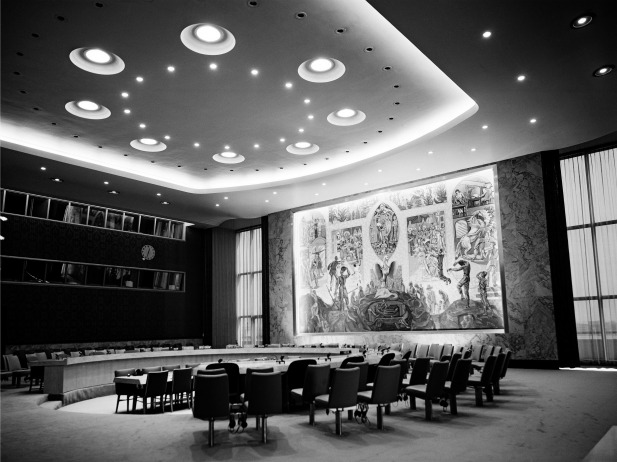 The Islamic State’s exploitation of the Internet and social media continues to bedevil U.S. policymakers, legislators, and tech companies. Problems with State Department efforts to counter Islamic State online propaganda have produced another overhaul of U.S. counter-messaging efforts. A legislative proposal in June 2015 to increase company reporting of online terrorist activity was dropped, but it reappeared after the San Bernardino terrorist attacks. Executive branch pressure on companies to do more against terrorist use of social media has increased, most recently in a meeting last month between federal officials and tech company leaders.
The Islamic State’s exploitation of the Internet and social media continues to bedevil U.S. policymakers, legislators, and tech companies. Problems with State Department efforts to counter Islamic State online propaganda have produced another overhaul of U.S. counter-messaging efforts. A legislative proposal in June 2015 to increase company reporting of online terrorist activity was dropped, but it reappeared after the San Bernardino terrorist attacks. Executive branch pressure on companies to do more against terrorist use of social media has increased, most recently in a meeting last month between federal officials and tech company leaders.
Attention on the U.S. government’s struggles has overshadowed that terrorist online activities affect many countries. Meetings of the UN Security Council’s Counter-Terrorism Committee (CTC) in mid-December 2015, which I attended, focused on these global dimensions. The CTC Executive Directorate organized a technical meeting involving representatives from governments, civil society, and companies to discuss terrorist use of the Internet and social media. Then, the CTC held a special meeting for UN delegations and representatives from regional and international organizations to consider the technical meeting’s input and share perspectives on confronting this threat.
The CTC has long addressed terrorist exploitation of information and communication technologies (ICTs). In Resolution 1624 (2005), for example, the Security Council urged UN member states to combat incitement to commit terrorist acts. In tracking implementation of this resolution, the CTC reported difficulties countries face mitigating online terrorist activities. However, the Islamic State increased this threat in ways the CTC has decided to address more directly. The December meetings were designed to inform “strategies to guide States and the private sector in their efforts to prevent terrorists from exploiting the Internet and social media to recruit terrorists and incite terrorist acts, while respecting human rights and fundamental freedoms.”
The meetings were wide-ranging and populated with calls for more international cooperation. However, turning these calls into effective strategies confronts challenges because, beneath the diplomacy, tensions exist, including in the following areas:
Strategic considerations
Friction between support for government-led strategies, and preferences for multi-stakeholder approaches;
Interest in more counterterrorism regulation of cyberspace, amidst warnings from human rights advocates about the dangers of further empowering governments to act under expansive notions of “terrorism;”
Identification of the need to build global trust in fighting terrorism in cyberspace, against the backdrop of disagreements among governments–and between the public and private sectors–over Internet governance, cybersecurity, privacy, and freedom of expression;
Support for the argument, made a UN official, that “the UN Charter and international human rights law form the basis for effective preventive and counter-terrorism measures,” contrasted with the sense that, so far, these instruments have not produced effective measures; and
Interest in addressing online terrorism as a threat on its own terms, versus assertions that attacking the “root causes” of terrorism, which arise in the real world not cyberspace, is the only way to mitigate this problem sustainably.
Role of the United States and U.S. companies
Recognition of the importance of the United States, complicated by concerns that strict U.S. constitutional protection of freedom of speech, other federal laws, and the global dominance of U.S. social media companies inhibit international cooperation; and
Frustration with U.S. social media companies, countered by claims the companies are acting appropriately with all stakeholders.
Counter-content and counter-messaging approaches
Gaps among governments, and between governments and companies, about what criteria should guide taking down content from online platforms on counterterrorism grounds; and
Interest in more effective counter-messaging campaigns, versus skepticism global collaboration in this area can be cohesive, consistent, or achieve the scale and speed needed to have strategic impact against the Islamic State.
Law enforcement issues
Consensus that mutual legal assistance treaties (MLATs) need reform to support countering online terrorist activities, but without clear direction on how reform moves forward globally; and
Statements from law enforcement officials that encryption poses a threat to their efforts against terrorism and crime, versus support for encryption from civil society and companies.
These, and other, issues do not mean the CTC’s commitment to address terrorist use of the Internet and social media faces insurmountable obstacles. In concluding the special meeting, the chair stated the CTC would:
Monitor terrorist use of the Internet, social media, and other emerging technologies;
Identify and share good practices developed around the world;
Continue to assess UN member states’ implementation of relevant Security Council resolutions, including those urging measures against incitement to terrorism; and
Support governments, the private sector, and civil society in counter-messaging activities.
Guided by the Security Council, the CTC will work to turn these commitments into strategies that, as its December meetings demonstrated, have not yet materialized amidst global reactions to the Islamic State’s online onslaught. Whether this onslaught confounds the Security Council and the CTC as it has the United States will now be determined.
